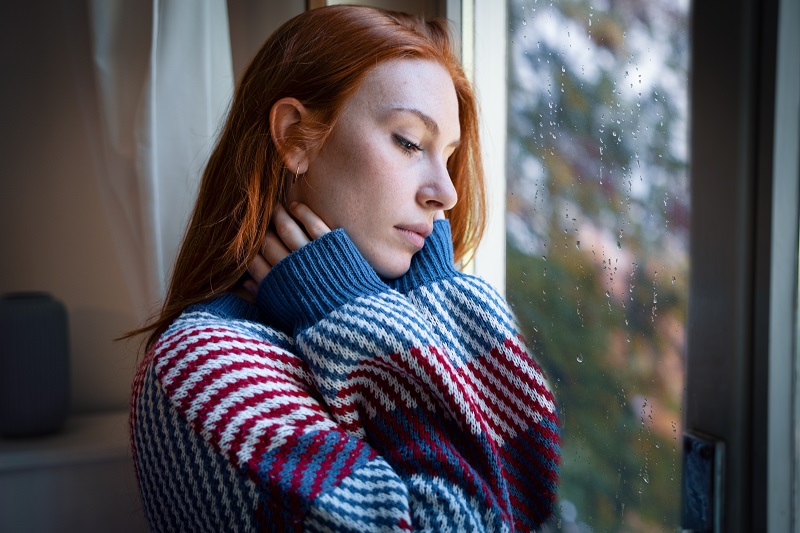Seasonal Affective Disorder vs. Depression: How to Tell the Difference

February 02, 2023
Everyone can relate to those wintertime “blues”. When the days get shorter, the weather colder, we spend less time outdoors and typically see less daylight and sunlight.
Often referred to as the dark days of winter, the change of seasons can also bring on changes in mood and energy. So the days may be literally darker (with the sun rising later and setting earlier), but we may also notice our mood or attitude feel darker.
When the seasons change, some people can experience seasonal affective disorder (SAD). This is the clinical term for a type of depression that happens during certain times of the year, usually beginning in late fall to early winter. It is very common and typically more pronounced in regions that experience more significant changes in seasonal climate.
Psychiatrist, Yolonda Renee Pickett, M.D., shares how to tell the difference between SAD and clinical depression, along with treatment options to consider.
What is Seasonal Affective Disorder?
SAD is a type of depression, causing symptoms during certain times of the year correlated to seasonal changes.
“While the majority of individuals with seasonal affective disorder are impacted in the winter months, it can also happen in late spring or early summer – it’s the change in season that can trigger these emotions, not the weather specifically. Most people with SAD are affected by changes in the amount of hours of daylight, which usually occur with the changing seasons,” shares Dr. Pickett.
Dr. Pickett added, “These changes may be related to changing the clock, changes in sunrise/sunset, and accompanying changes in the time we spend in daylight and outdoors. Also changes in our options for and frequency of outdoor activities.”
“Some researchers believe that SAD can be linked to a reduction in serotonin production, a chemical in the brain that helps to regulate mood; or a vitamin D deficiency, which can occur due to changes in exposure to sunlight. Some also believe that there is a link to increased melatonin production, which may be triggered by the darker days in fall and winter seasons,” she adds.
How are Seasonal Affective Disorder and Depression Different?
People with SAD, not depression, may:
- Notice the onset of their symptoms during a season change
- Notice that symptoms arise and resolve at the same times of year every year
“SAD is a type of depression, the main difference is about timing. Those with SAD would see a pattern in their depressive symptoms, and can feel okay during other times of the year,” adds Dr. Pickett.
How are Seasonal Affective Disorder and Depression Similar?
People with SAD or depression may:
- Feel sad, hopeless or empty most of the time
- Lose interest in activities that they’re usually excited about
- Feel tired or have low energy levels throughout the day
- Experience changes in appetite or eating habits (either eating less or eating more)
- Experience changes in sleep habits like insomnia or oversleeping
- Have trouble concentrating or remembering things
- Experience guilt or feelings of worthlessness
- Think about death or have suicidal thoughts
Treatments for Seasonal Affective Disorder and Depression
Treatment options that may help patients with depression or SAD include:
- Talk therapy, such as cognitive behavioral therapy
- Medication
- A combination of talk therapy plus medication
Lifestyle changes that may help patients with depression or SAD include:
- Getting exercise regularly
- Socializing with friends regularly
- Participating in activities that you typically enjoy regularly
Additional treatment options that may help patients with winter-pattern SAD include:
- Light box therapy – exposure to this type of bright light may be effective
- Vitamin D supplements, if they’re recommended by a doctor
Lifestyle changes that may help patients with winter-pattern SAD include:
- Regulating sleep patterns, to avoid sleeping too much
- Regulating diet, to avoid overeating or craving carbs
For summer-pattern SAD, keeping cool and using room-darkening bedroom curtains may help.
Next Steps & Resources:
- Meet our source: Yolonda Renee Pickett, M.D.
- To make an appointment with TK doctor, or a doctor near you, call 800-822-8905 or visit our website.
The material provided through HealthU is intended to be used as general information only and should not replace the advice of your physician. Always consult your physician for individual care.







